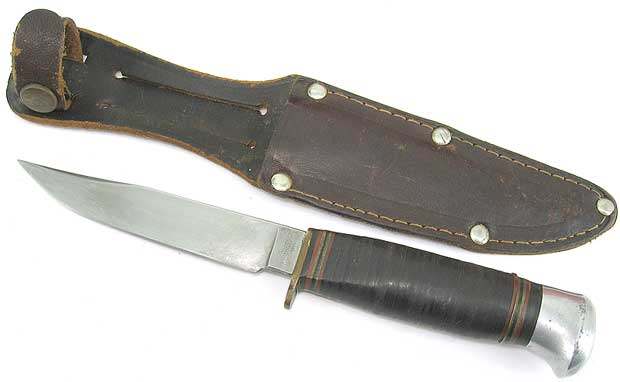scorpnsnake
Gold Member
- Joined
- Nov 8, 2023
- Messages
- 1,691
The BladeForums.com 2024 Traditional Knife is ready to order! See this thread for details:
https://www.bladeforums.com/threads/bladeforums-2024-traditional-knife.2003187/
Price is $300 $250 ea (shipped within CONUS). If you live outside the US, I will contact you after your order for extra shipping charges.
Order here: https://www.bladeforums.com/help/2024-traditional/ - Order as many as you like, we have plenty.


The iconic Kay-Bar looks as butch as it does in part due to it's large fullers.
Yet, there are few serious "combat" knives with fullers out there.
Anyone have thoughts on this.
I always thought that the oversized, Marbles-style fullers were SEXY AS HELL...
View attachment 2674881
View attachment 2674882
Oh my. I'm forrest gump on the bed with JennyExtreme Fuller:

I don't think, and I could be wrong, but I don't think that removing material in any way shape or form makes anything stronger. Like an I beam, they remove material and shape it to maintain rigidity and load bearing capabilities but it's not actually stronger than a solid piece. It is more efficient in terms of strength to weight ratio in some cases though.I know that putting "fullers" into rifle barrels (i.e., fluting) reduces weight while keeping the barrel just as "stiff" (or even stiffer, I forget) than it is in its unfluted condition.
I suspect that putting a fuller into a knife blade -- particularly if the fuller is put in through forging, rather than machining -- makes it stiffer, as well, while reducing weight.
it's reminiscent of the subtle hollow grind in the backside of japanese chisel ground knives.The concept of the fuller as seen on modern blades was apparently originated by Webster Marble on the Ideal model hunting knife....and it had nothing to do with tactical blood sucking or whatever.....

Marbles Gladstone knife
Picked this up today: a Marbles Gladstone knife, 9.74 inches long, with a six-inch blade. I've been looking around online and haven't yet seen anything about dating these. On this forum and elsewhere there are references to the having been used by GI's in WWII. When I first saw this in the sheath...www.usmilitariaforum.com

Jason Knight’s fullers are big enough and deep enough to be used in opening one of his knives either one or two handed,I've got a bunch of them but I'll throw this Jason Knight folder in.
My take on fullers on folders is more of a design aesthetic.
And this one has a large aesthetic.
View attachment 2674619
I don't think, and I could be wrong, but I don't think that removing material in any way shape or form makes anything stronger. Like an I beam, they remove material and shape it to maintain rigidity and load bearing capabilities but it's not actually stronger than a solid piece. It is more efficient in terms of strength to weight ratio in some cases though.
I can see how compacting the steel would make it denser and therefore more difficult to bend. I'm a machinist/cnc programmer by trade, we remove material for a variety of reasons and I have a good understanding of metal working but not forging.Yeah, I'm pretty sure you're right, at least as it regards fluted rifle barrels, where some material is machined away.
In the case of knife blade fullers, particularly those created by forging (IOW, where the steel isn't removed, but rather just displaced), I suspect they may actually be slightly stiffer, at least in a right-left orientation, than the same blade without a fuller, for two reasons:
First, by putting in the fuller through forging, you're displacing that metal elsewhere -- and very likely making it thicker in (right-to-left) cross section elsewhere. This could make it stiffer, at least in that one plane. Second, the act of forging aligns the "grain" of the steel at a microscopic level to some degree, making it stiffer -- especially after quenching...
I doubt the aesthetics of a USMC fighting knife were much of a consideration when it was adopted.On something short-bladed like a knife, a fuller is mostly for aesthetics. I'm not saying it doesn't affect balance or weight at all, but it's probably negligible and often unnoticeable.
Most of the knives they're on it was done because "it looks cool".
I'm with you guys. Good for stabbing zombies, too.

